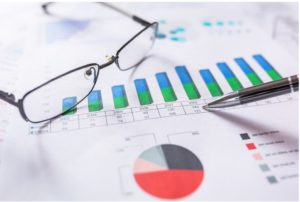Traditional investment activities such as buying stocks, bonds, commodities, and currencies through brokerages sufficed before the FinTech evolution. Clients with an eye to capital appreciation would typically drop anchor with their chosen financial instruments and wait for them to appreciate. Indeed, the performance of major bourses around the world has been encouraging for several years. For the year to date in 2017, the US market has appreciated by 22.10% the Dow Jones industrial average (28.48%), the NASDAQ composite index (29.94%) and the S&P 500 index (22.52%). However, with markets at record levels, and the prices of stocks at 52-week highs – clients are rightly concerned about how much their investments can grow over time.
Expanding Your Financial Portfolio
One of the problems with conventional investments is the fact that asset prices need to move in a positive direction for gains to be enjoyed by investors. This conventional system was disrupted in 2008/2009 when the global financial crisis hit. Traders and investors quickly realized that central banks could not be trusted to rescue national economies, and that the overinflated financial sector could bring down the entire system.
Enter the FinTech evolution where trading activity now encompasses a wide range of alternative investment options such as derivatives markets. Contracts for difference, spread betting, and tracking prices of listed financial instruments is now possible. Derivatives markets are particularly interesting. They allow the trader/investor to dabble in financial instruments without purchasing the underlying asset. As a case in point, it is possible to profit from asset price movements – to the upside or downside – by simply calling it correctly.
Trading Assets up or down
What’s equally impressive about derivatives trading is that no ownership of the underlying asset is needed. This is to say that a client can trade Google, Yahoo, Facebook, Bank of America, gold, crude oil, the Dow Jones, currency pairs and other instruments without buying them. Contracts for difference (CFDs) allow traders to forecast future prices and trade accordingly. This secondary market is now a huge component of overall financial trading activity.
Many investors have included derivatives markets as part of their financial portfolios for several reasons. For starters, it is a terrific diversification strategy heading into the new year as it provides a hedge against asset price movements. For example, a traditional investor with large holdings in gold stocks may wish to hedge against losses in gold by trading derivatives in a bearish fashion. Therefore, if gold prices move lower, the CFD in gold stocks or gold ETFs can ensure profits. By retaining the actual stocks with the traditional broker, the investment is never lost, but profit is maximized through the derivative instrument.
A Word from the Wise
One of the most notable benefits of derivatives trading is the ability to turn over large sums of money for large profit potential in double-quick time. Wilkins Finance trading strategist Hamish Cornwall cautions that derivatives trading has an element of risk and volatility to it.
‘If we assume margin and leverage with trading activity, there is a downside risk. However, it is possible to study the market fundamentals and technical factors to mitigate these risks and profit to the upside. Derivatives trading is a welcome addition to the financial arena, and acts as a counterbalance to traditional investments with bricks and mortar brokerages. With widespread interest in futures markets, CFDs are naturally a go-to option for many traders. The bullish or bearish perspective can be exercised by purchasing CFD contracts.’
Now that the Fed has hiked interest rates once again in the region of 1.25% – 1.50%, we can expect further strengthening of the USD in the new year. Dollar demand will continue to increase, resulting in decreased demand (all things being equal) with dollar-denominated commodities such as gold, crude oil and the like. The upcoming tax overhaul from 35% to 21% or thereabouts, will benefit big banks and financial institutions across the US. It is also likely to spur dramatic reinvestment in the US economy as corporate tax rates fall below the global average. These are some of the most important fundamental factors and macroeconomic variables to consider when investing in derivatives instruments in 2018


{ 0 comments… add one now }